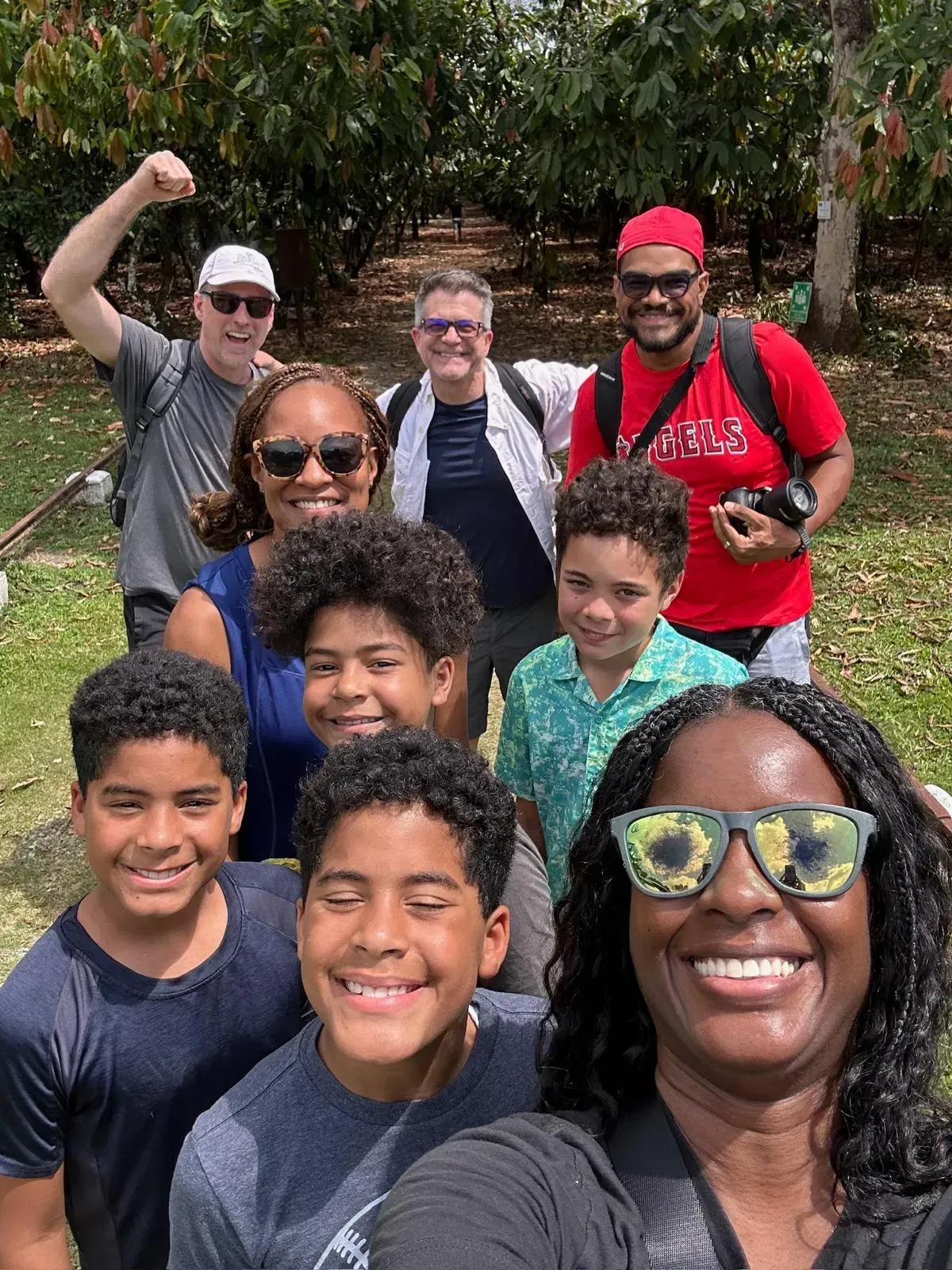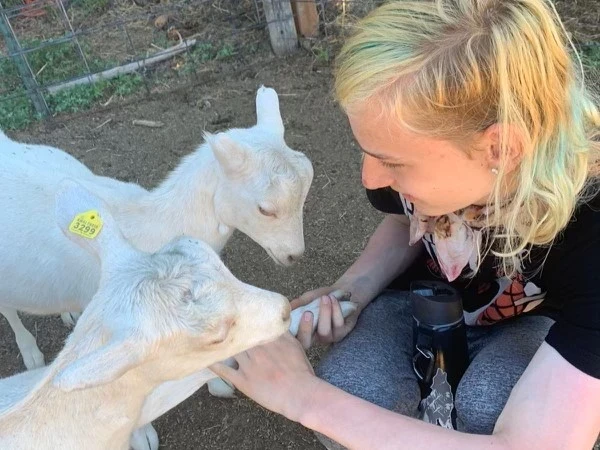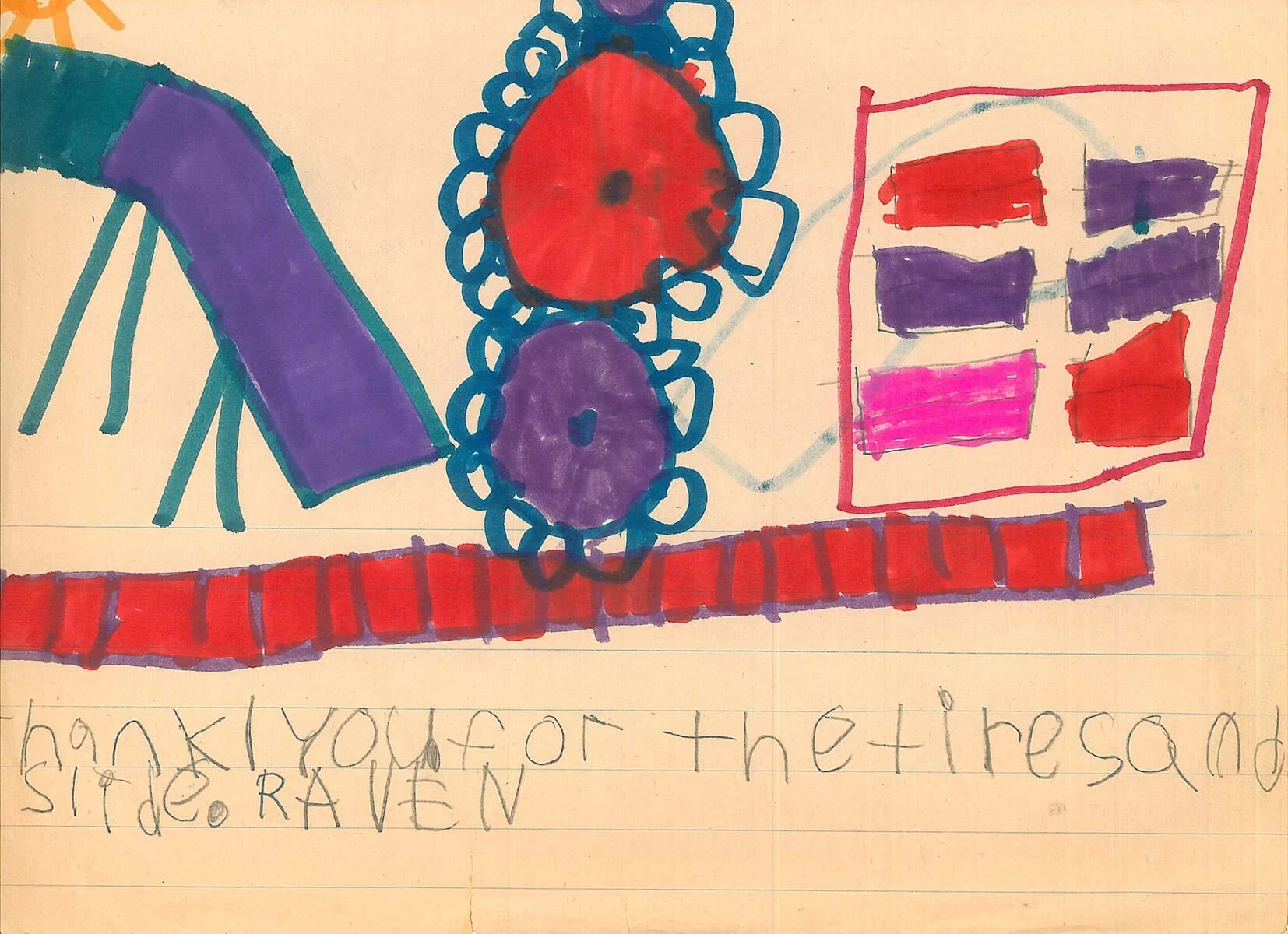Exciting news! In March I traveled to Hervey Bay about 3 1/2hours north of Brisbane at the southernmost tip of the Great Barrier Reef. I met with members of the Butchulla Aboriginal community with whom we will collaborate on a VISIONS program. Solid groundwork had already been laid before my trip by VISIONS founder and former Executive Director, Mel Bornstein, who spends half the year Down Under. Mel and his wife, Carmen, became acquainted with Korrawinga Aboriginal Corporation and its self-determined endeavors to benefit the local Aboriginal population (about 1,000). They knew right off that Korrawinga and VISIONS were a match. Everything about my trip, from the first day to the last, confirmed their instincts.
Korrawinga’s most impressive project is a 70-acre plot of land that in two years time has been transformed into a fertile organic farm and information/education center. Scrub Hill Farm, on the outskirts of Hervey Bay, will be a perfect home base for VISIONS.
The Farm is a central meeting place for the Butchulla people. On weekdays, about 75 Aboriginals work at the Farm; the Kal’ang elders are bussed in daily for lunch; evening arts and crafts workshops and community meetings take place in the central hall on site. VISIONS groups will work alongside our Aboriginal hosts, learning directly from them about their history and culture while lending a hand to their development efforts.
I spent my first day in Australia at Scrub Hill, arriving early to meet with Frances Gala, President of Korrawinga, and other key people. Frances is the driving force behind Korrawinga, a remarkable woman with a clear vision, heart and no-nonsense savvy. After initial introductions, we watched three teenage boys perform a series of traditional Aboriginal dances. One was especially masterful at playing the native didjeri- doo (dij er ee do); his wooden horn, about 4 feet long, produced a deep, clear echoing sound.
Scrub Hill has a fully established nursery with a hothouse for germination and a shade house for propagating seedlings. An Asian market has been identified for native cut flowers and the Farm is currently producing these for export.
The operating philosophy is permaculture practice: they cultivate plants for ploughing back into the earth, have a system of crop rotation and irrigation, and are building up a free range poultry run. Pests are controlled naturally, not by pesticides. We viewed the crops —organic vegetables, acres of tea trees, lemon myrtle, exotic flowers, to name a few— walked the bush tucker trail, admired crafts and paintings produced at the onsite art gallery and workshop. Everyone was eager to show me the Farm and visibly proud of the remarkable progress made.
My visit coincided with the Korrawinga monthly meeting, and so I had the opportunity to speak directly to many members of the community about VISIONS. They are enthusiastic about our collaboration and look forward to hosting the first VISIONS group next summer. The next day my hosts showed me Fraser Island just off the coast. The largest sand mass island in the world, Fraser Island has complex rainforests, pristine fresh water lakes and streams, dramatic stretches of sand beaches, and alluring wildlife, including the purest strain of dingoes on the planet. It is extraordinary. Before European settlement in the 1840s and subsequent dispossession, Aboriginals inhabited the island and it remains significant to the indigenous community. (Aboriginals have inhabited the Great Sandy region for at least 5,000 years, probably longer.) The Butchulla hope that VISIONS groups will help rehabilitate the Aboriginal youth camp on the island.
I spent the rest of my days exploring as much as possible. Hervey Bay is an outdoor lover’s Mecca. Wild life on land and in the sea is dramatic, diverse and fascinating. (It’s not hard to spot kangaroos, although Australians ind them very annoying!) The city (pop. 50,000) sits right on the coast, and the Great Sandy Region is one of Australia’s most alluring areas. Hervey Bay is also an annual stopover for hump back whales late July through October.
As Frances said, good things happen when the time is right and all is ready. As my trip wound down, there was no doubt in my mind that not only the timing but pretty much everything else was right for starting a VISIONS program in Australia. Look for a description of VISIONS Australia on our web site this coming fall and in the 2001 brochure. No Worries, Mates, see you in 2001 on the other side of the date line!






